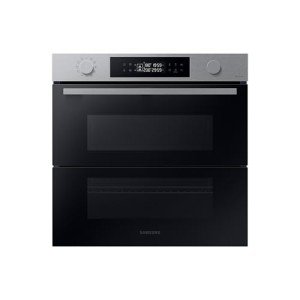The Rise of Built-In Ovens: A Seamless Approach to Modern Cooking
In contemporary cooking areas, where style aesthetics mix effortlessly with performance, one device sticks out as a real video game changer: the built-in oven. As house owners and chefs alike continue to look for innovative solutions that improve their cooking experience, built-in ovens have actually become progressively popular. This article explores the advantages, factors to consider, and trends surrounding built-in ovens, highlighting why they are an essential feature in modern cooking spaces.
What is a Built-In Oven?
A built-in oven is a kitchen area home appliance designed to be integrated into the cabinets of a kitchen area rather than standing alone. Unlike traditional freestanding ovens, which can be moved and placed anywhere, built-in ovens come in numerous styles and sizes to fit particularly within designated areas. Offered in single or double configurations, these ovens use a streamlined appearance that complements modern-day cooking area designs.
Advantages of Built-In Ovens
1. Space-Saving Design
Among the most appealing benefits of built-in ovens is their space-saving style. By integrating the oven into cabinets, you can free up valuable counter and flooring area. This is especially helpful in smaller sized kitchens, where maximizing room is vital. Built-in ovens can be set up at eye level, making them more accessible and reducing the requirement to flex down.
2. Aesthetic Appeal

Built-in ovens add to a smooth and cohesive kitchen style. Offered in different finishes-- such as stainless-steel, black, white, and custom-made cabinets-- they can mix flawlessly into the general design. This visual appeal enhances the cooking area's visual consistency and raises the area, developing a modern-day and advanced atmosphere.
3. Enhanced Functionality
Numerous built-in ovens come equipped with sophisticated cooking technologies, such as convection cooking, steam ovens, and clever features. These improvements enable for flexible cooking alternatives, making it easier to attain professional-level outcomes at home. Smart built-in ovens can even link to Wi-Fi, making it possible for users to manage the oven remotely, get alerts, and access a range of cooking programs and recipes.
4. Enhanced Ventilation
Due to the fact that built-in ovens can be integrated with kitchen hoods and ventilation systems, they can help maintain better air quality and decrease cooking odors. This is specifically considerable for those who love to cook with aromatic spices and components, as an effective ventilation system can keep the kitchen comfortable and welcoming.
5. Modification Options
Built-in ovens provide a large range of customization alternatives to match private cooking designs and needs. From professional-grade home appliances with multiple cooking modes to compact styles for smaller sized cooking areas, house owners can pick the oven that fits their specific requirements. Numerous producers also use adjustable front panels, permitting you to match the oven's appearance to your cabinets for a genuinely unified appearance.
Factors to consider When Choosing a Built-In Oven
While built-in ovens have lots of advantages, there are crucial considerations to bear in mind before purchasing:
1. Cost
Built-in ovens usually include a higher price than their freestanding equivalents due to their style and installation requirements. It's crucial to element in both the expense of the oven and any additional expenditures connected to kitchen cabinetry modifications or setup.
2. Installation Requirements
Installing a built-in oven often needs professional assistance, especially if you need to modify existing kitchen cabinetry. Ensure that you consider any costs related to installation, consisting of labor and potential kitchen cabinetry modifications.
3. Size and Dimensions
Before purchasing a built-in oven, determine the designated area properly to guarantee an appropriate fit. Built-in ovens come in numerous sizes and configurations, so picking one that lines up with your requirements and cooking area design is important.
4. Lifestyle and Usage
Consider your cooking routines and needs when picking a built-in oven. If you often host big events, a double oven might be more advantageous. On the other hand, if you have a compact kitchen, a single-wall oven might suffice.
Trends in Built-In Ovens
The cooking area home appliance market is continuously developing, and built-in ovens are not exempt from emerging patterns. Some present trends consist of:
Smart Technology Integration: With the increase of wise home technology, built-in ovens now typically include connectivity alternatives. bulit in oven permits users to keep track of cooking progress and change settings via mobile apps.
Energy Efficiency: As sustainability becomes a priority, lots of producers are purchasing energy-efficient built-in ovens that lower energy intake while maintaining efficiency.
Multi-functional Designs: Built-in ovens now use features such as air frying, slow cooking, and steaming, providing versatility that fulfills a wide variety of cooking approaches.
Conclusion
Built-in ovens certainly represent a perfect mix of design, function, and convenience in today's kitchen areas. As more property owners choose this modern solution, the focus shifts to creating a cooking area that is as aesthetically pleasing as it is practical. Whether you are constructing a new home or remodeling your cooking area, considering a built-in oven might elevate your culinary experience and transform your kitchen area into a trendy and practical haven. With an array of alternatives offered and ongoing innovations in technology, built-in ovens stay a standout choice for both newbie cooks and culinary lovers alike.
